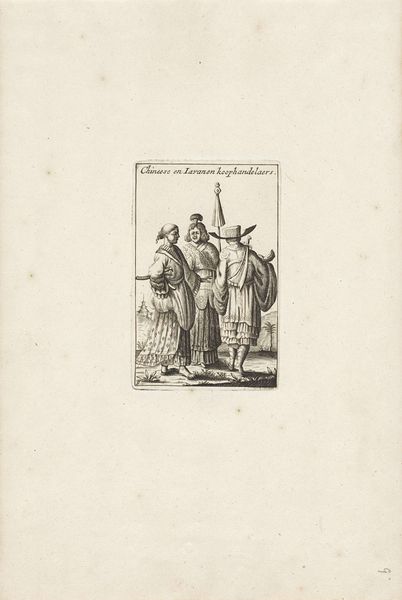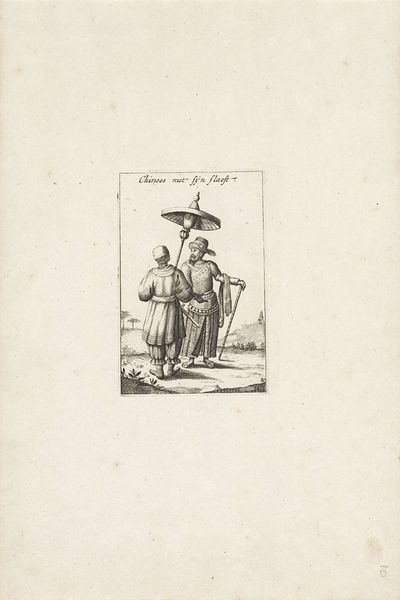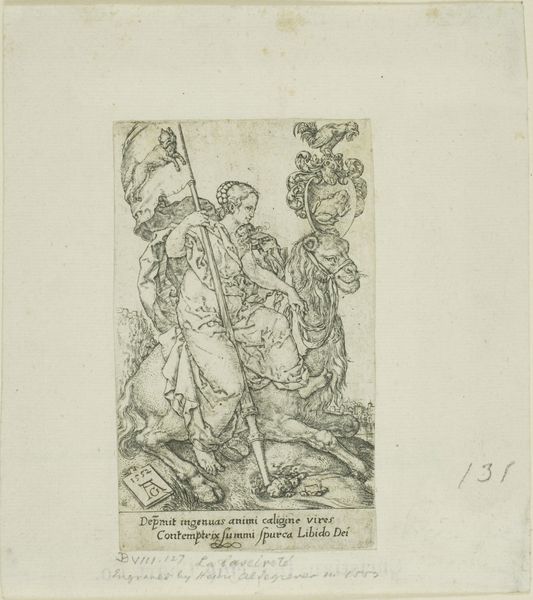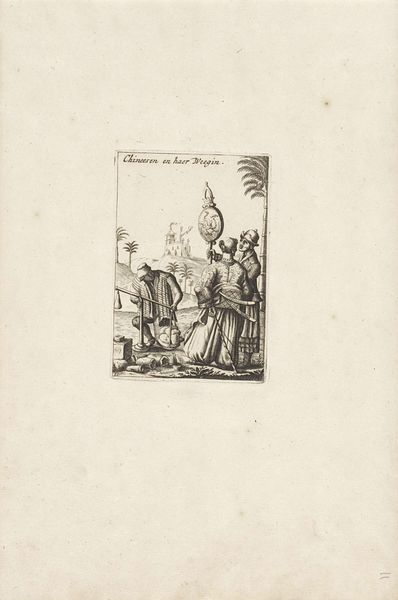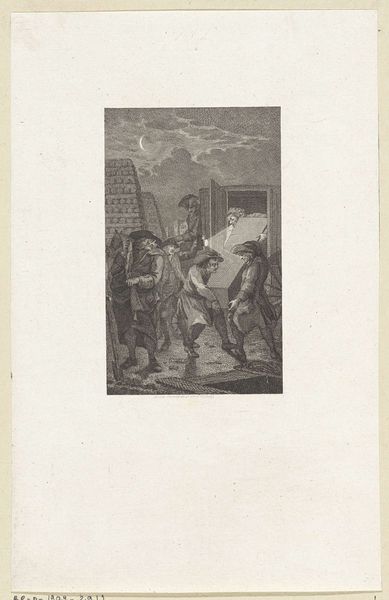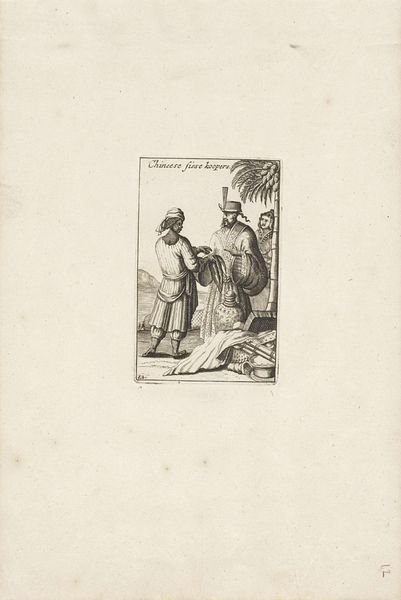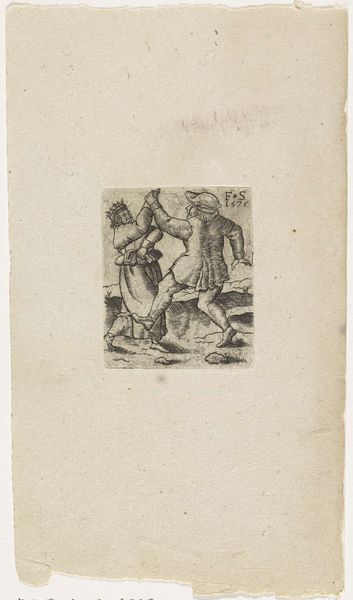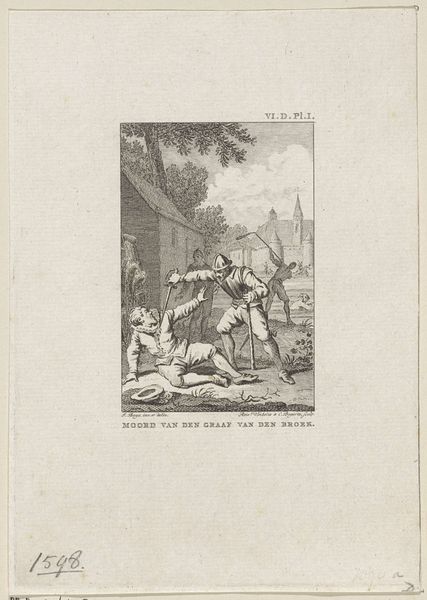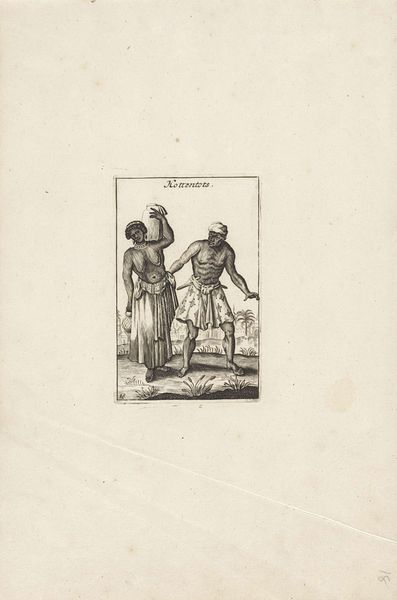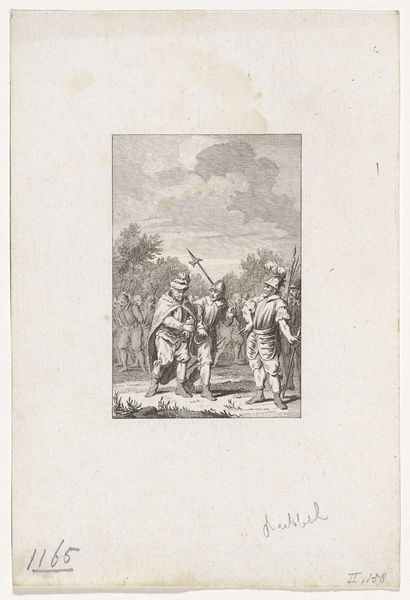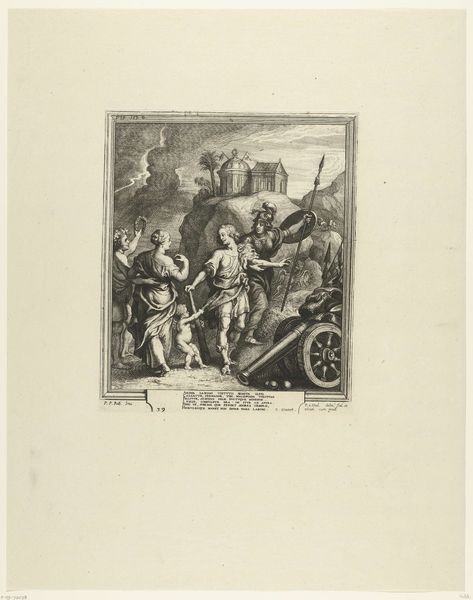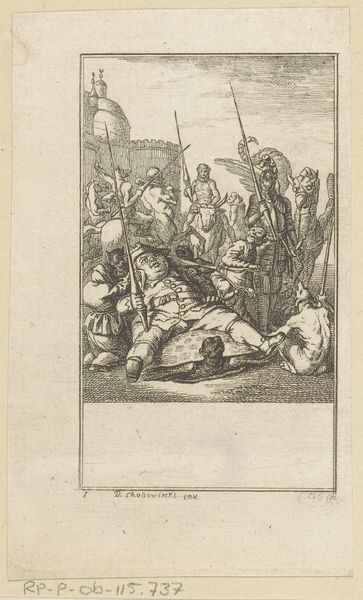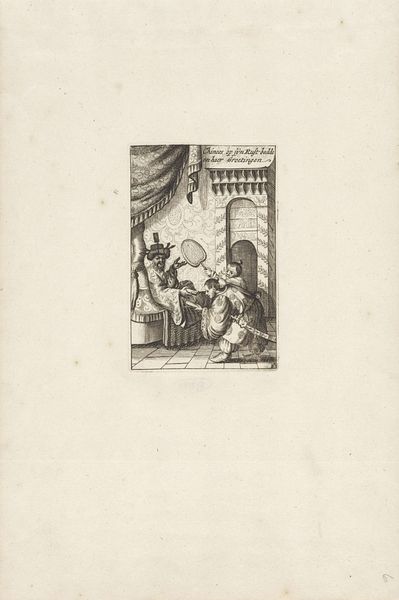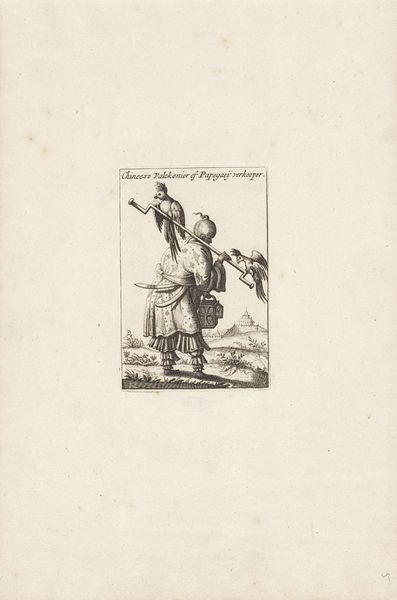
engraving
#
baroque
#
old engraving style
#
genre-painting
#
engraving
Dimensions: height 104 mm, width 66 mm
Copyright: Rijks Museum: Open Domain
Editor: This engraving, titled "Two People from Siam and a Chinese Soldier" by Pieter Schenk, made between 1682 and 1711, seems so focused on the detail of the clothing. How do you see this piece? Curator: Well, from a materialist perspective, it’s important to consider the process of engraving itself. The meticulous labor involved in creating these lines, this kind of dissemination of images, also speaks volumes about the Dutch Republic's interest in, and commodification of, the "exotic" other. What purpose did that detailed attention to the garments serve, given the context? Editor: You're suggesting the clothing wasn't just about accurate depiction, but something else entirely? A commentary on trade, maybe? Curator: Exactly. Think about what these finely rendered textiles signify. They weren't readily available; they were the products of trade routes, colonial ventures. The engraving, in turn, becomes a commodity itself, consumed by a European audience eager to possess these images, but at a cost. This art exists within a nexus of labor exploitation and trade relationships, wouldn't you say? Editor: Absolutely, it gives the artwork an almost transactional meaning in addition to being aesthetically appreciated. Now when I look at the three figures I can also read the tension on what Schenk and his consumer might have thought of cultural differences and their implications. Curator: And seeing how these objects – clothing, and the image itself – are consumed and circulate adds another dimension to how we see Baroque art. Editor: It certainly makes you consider the economic underpinnings of art production back then and how tastes and collecting habits are developed! Curator: Indeed. Examining the materials and the means of production pulls back the curtain on the social context in ways that simply looking at "beauty" can obscure.
Comments
No comments
Be the first to comment and join the conversation on the ultimate creative platform.
